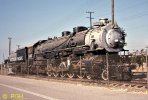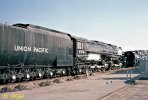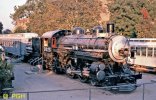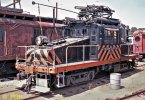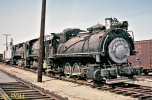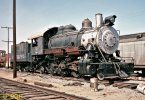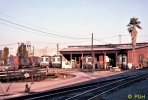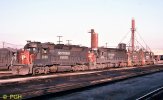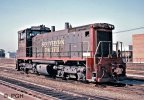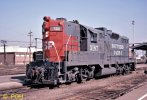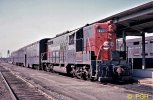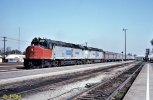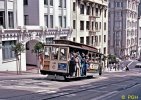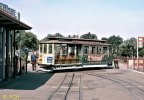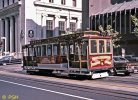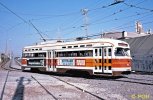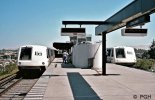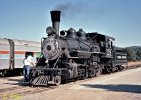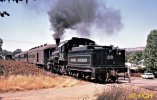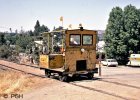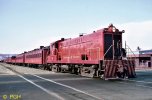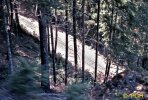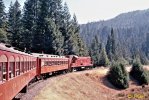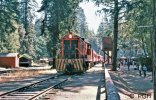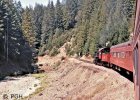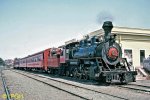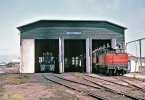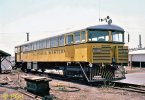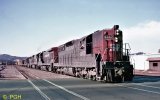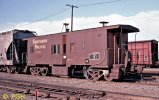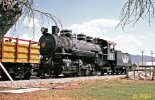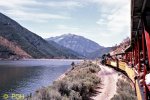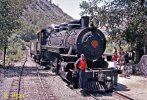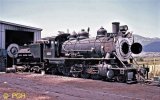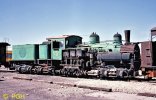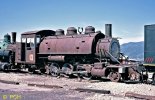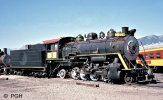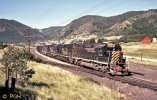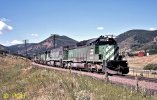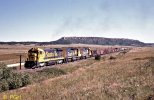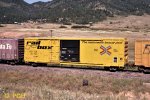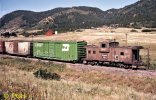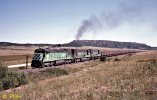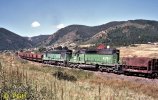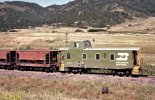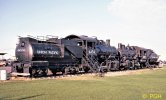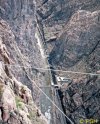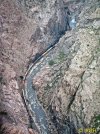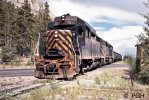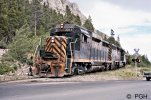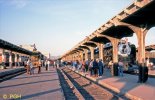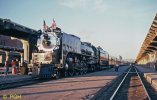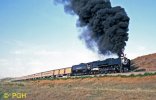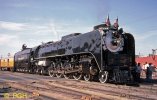PhilH
Western Thunderer
Photos taken during a trip to the USA and Canada in August 1978. These are mainly standard gauge, either mainline, short line or preserved, and don't include any of the narrow gauge.
Southern Pacific 5021 built by Alco works no.66793 in 1926 and now owned by the Southern California Chapter of the Railway and Locomotive Historical Society on display at the Los Angeles County Fairground at Pomona. A total of 49 of these three cylinder locomotives were supplied to the Southern Pacific by Alco in three variants classed SP-1 to SP-3, and class SP-2 No.5021 is the only survivor.
Union Pacific 'Big Boy' No.4014 also on display at Pomona. This was returned to the Union Pacific in 2013 for restoration to working order, as it was considered to be in the best condition of the 8 preserved Big Boys. Just visible in front of 4014 is Union Pacific 4-12-2 No.9000, the only one of that class to be preserved.
Southern Pacific 4-4-2 No.3025 on display at Travel Town, Griffiths Park, Los Angeles. Built by Alco in 1904, with its 81" diameter drivers it was apparently able to reach speeds of up to 100mph. It was retired in 1952 and donated by the Southern Pacific, becoming the first locomotive to be displayed at the Travel Town Museum.
Sacramento Northern No.653 at the Orange Empire Trolley Museum, Perris, California. Originally built by General Electric in 1928 for freight service on the interurban line it was donated to the museum in 1965 by the then owners Western Pacific RR when the remaining sections of line were dieselised. The museum has since been renamed as the Southern California Railway Museum.
Three ex industrial 0-6-0STs also on display at Perris. The first and third, nos. 2 and 3, were built by Davenport for the Mojave Northern Railroad which served the plant and quarry of the South Western Portland Cement Company. No.2 is works no.1584 built in 1917 and No.3 is works no.1972 built in 1923. They are oil burners with the oil tank mounted above the saddletank in front of the cab.
The middle loco is No.10 built by Alco works no.64764 in 1923 for the Lavino Furnace Company (later E.J.Lavino & Co.) at Sheridan, PA.
Nos.3 and 10 were stored at Perris but actually owned by the Pacific Southwest Railway Museum Association. In January 1981 they were transferred to the PSRMA's museum at La Mesa, California.
Ventura County Railway No.2 at Perris. Built by Baldwin works no.55415 in 1922 originally for the Cascade Timber Company of Reliance, Washington as their No. 107. It was sold to the Ventura County Railway in 1943 as their No.2. In 1962 it was sold to a private individual, being acquired by the museum in 1972. It has since been restored to working order.
Southern Pacific 5021 built by Alco works no.66793 in 1926 and now owned by the Southern California Chapter of the Railway and Locomotive Historical Society on display at the Los Angeles County Fairground at Pomona. A total of 49 of these three cylinder locomotives were supplied to the Southern Pacific by Alco in three variants classed SP-1 to SP-3, and class SP-2 No.5021 is the only survivor.
Union Pacific 'Big Boy' No.4014 also on display at Pomona. This was returned to the Union Pacific in 2013 for restoration to working order, as it was considered to be in the best condition of the 8 preserved Big Boys. Just visible in front of 4014 is Union Pacific 4-12-2 No.9000, the only one of that class to be preserved.
Southern Pacific 4-4-2 No.3025 on display at Travel Town, Griffiths Park, Los Angeles. Built by Alco in 1904, with its 81" diameter drivers it was apparently able to reach speeds of up to 100mph. It was retired in 1952 and donated by the Southern Pacific, becoming the first locomotive to be displayed at the Travel Town Museum.
Sacramento Northern No.653 at the Orange Empire Trolley Museum, Perris, California. Originally built by General Electric in 1928 for freight service on the interurban line it was donated to the museum in 1965 by the then owners Western Pacific RR when the remaining sections of line were dieselised. The museum has since been renamed as the Southern California Railway Museum.
Three ex industrial 0-6-0STs also on display at Perris. The first and third, nos. 2 and 3, were built by Davenport for the Mojave Northern Railroad which served the plant and quarry of the South Western Portland Cement Company. No.2 is works no.1584 built in 1917 and No.3 is works no.1972 built in 1923. They are oil burners with the oil tank mounted above the saddletank in front of the cab.
The middle loco is No.10 built by Alco works no.64764 in 1923 for the Lavino Furnace Company (later E.J.Lavino & Co.) at Sheridan, PA.
Nos.3 and 10 were stored at Perris but actually owned by the Pacific Southwest Railway Museum Association. In January 1981 they were transferred to the PSRMA's museum at La Mesa, California.
Ventura County Railway No.2 at Perris. Built by Baldwin works no.55415 in 1922 originally for the Cascade Timber Company of Reliance, Washington as their No. 107. It was sold to the Ventura County Railway in 1943 as their No.2. In 1962 it was sold to a private individual, being acquired by the museum in 1972. It has since been restored to working order.

